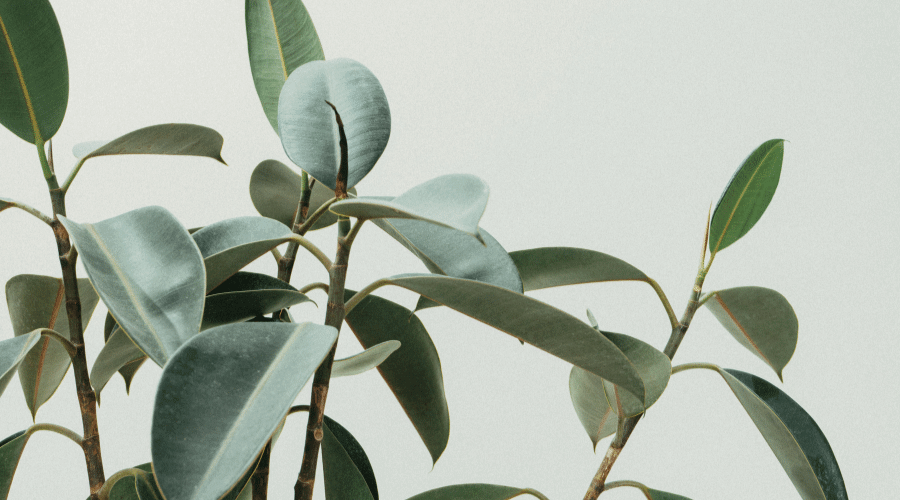Plants can be finicky creatures, requiring a delicate balance of sunlight, water, and nutrients to thrive. Even with the best intentions and care, it’s not uncommon to see brown tips appear on the leaves of your plants. These unsightly blemishes can cause concern for even the most seasoned plant parent, but fear not! In this article, we’ll delve deeper into the causes of brown tips and share tips on reviving your greenery.
Why do brown tips appear on your plants?
There are a few reasons brown tips could appear on your plants. Ironically, one of the most common reasons for brown tips is overwatering. When plants are given too much water, their roots become waterlogged, damaging and browning the tips. To avoid overwatering, it’s essential to understand the watering needs of each plant. Some plants require more frequent watering than others, while some prefer their soil to dry out between waterings. A good rule of thumb is to check the soil moisture level before watering, ensuring the soil is slightly damp but not saturated. However, underwatering can also cause brown tips. When plants don’t receive enough water, their leaves can become dry and crispy, leading to the browning of the tips. To combat underwatering, water your plants regularly and adjust the watering schedule as needed.
Low humidity can also cause brown tips on plants, especially for species that require high humidity levels. If you notice your plant’s leaves are drying out and turning brown at the tips, it may be time to increase the humidity around your plant. You can do this by misting the leaves with water, placing a humidifier near the plant, or even placing a tray of water near the plant to help keep the air around it moist.
Fertilizer burn is another common cause of brown tips. While fertilizer is important for plant growth, over-fertilizing can cause damage to the plant’s roots, resulting in brown tips on the leaves. To avoid this, follow the instructions on the fertilizer package and avoid applying too much and too close to the plant stalk.
Too much direct sunlight can also cause brown tips on plants. Some plants can become sunburned if exposed to too much direct sunlight, which can cause the tips of the leaves to turn brown. Again, you need to know the sunlight needs of the plant you are parenting. If your plant is in direct sunlight for several hours a day more than it needs or can handle, it may be time to move it to a spot where it will receive indirect sunlight or use a sheer curtain to filter the light.
Should I cut the brown tips off my plant?
If your plant has brown tips on its leaves, you may be wondering whether you should cut them off. The answer to this question depends on the damage’s severity and the brown tips’ cause.
If the brown tips are only a small portion of the leaf and the rest of the plant looks healthy, trim off the brown ends using clean scissors or shears without hurting the plant. This could help prevent the brown tips from spreading and make the plant look more aesthetically pleasing.
Can brown leaves turn green again?
Unfortunately, once a leaf has turned brown, it cannot turn green again. Brown leaves are typically an indication that the cells in the leaf tissue have died, which means that the leaf cannot be revived or repaired. However, it’s important to note that removing the brown leaves can help the plant focus its energy on producing new, healthy leaves.
If you notice that your plant has brown leaves, it’s essential to identify the cause and take appropriate action to prevent further damage.

How to save Plants with brown tips
If you’ve noticed brown tips on your plant’s leaves, don’t despair. While it’s impossible to revive brown leaves, you can take steps to help your plant recover and prevent further damage. Here are some tips on how to save plants with brown tips:
- Check the watering: Brown tips on plants can indicate overwatering or underwatering. Stick your finger in the soil to determine if your plant needs water. If it feels dry, it’s time to water. If it feels damp, hold off on watering for a few days. Ensure the pot has adequate drainage holes to prevent waterlogging.
- Increase humidity: Some plants require high levels of moisture to thrive. If your plant is showing signs of dryness and brown tips, try increasing the humidity around the plant. You can do this by misting the leaves with water, placing a humidifier near the plant, or even placing a tray of water near the plant to help keep the air around it moist. You can also cover it with a transparent plastic bag to trap moisture and make it a suitable environment for the plant until it recovers.
- Adjust lighting: Some plants can become sunburned if exposed to too much direct sunlight, which can cause the tips of the leaves to turn brown. If your plant is in direct sunlight for several hours a day, it may be time to move it to a spot where it will receive indirect sunlight or use a sheer curtain to filter the light.
- Reduce fertilizer: While fertilizer is essential for plant growth, over-fertilizing can cause damage to the plant’s roots, resulting in brown tips on the leaves. To avoid this, follow the instructions on the fertilizer package and avoid applying too much fertilizer.
- Trim off the brown tips: If the damage is severe, you may need to trim off the brown tips using a clean pair of scissors or shears. Make sure to cut at an angle to prevent the cut from being visible, and keep an eye on the plant’s health to ensure that the damage does not spread.
- Re-pot the plant: If the root system is damaged due to overwatering, it may be time to re-pot it into a container with fresh soil and better drainage.
These steps can help your plant recover from brown tips and promote healthy growth. Remember, prevention is key to avoiding brown tips in the first place, so ensure your plant has the conditions and care it needs to thrive.
In conclusion, brown tips on plants can be a cause for concern, but they don’t have to be the end of the world. Understanding the causes and taking the appropriate steps to address them can help your plants recover and thrive. So the next time you notice brown tips on your green friends, don’t panic – grab your watering can and start reviving!

Recent Posts
Unlocking the secret to expanding your begonia maculata family is like discovering a treasure trove of green goodness. If you've ever marveled at the stunning beauty of angel wing begonia leaves and...
If you've ever found yourself marveling at the surreal beauty of air plant blooms, you're in for a treat! These enchanting bursts of color amidst a sea of lush green foliage are like nature's way of...

